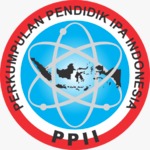Pemetaan Tingkat Bahaya Gempabumi Berbasis Percepatan Getaran Tanah Maksimum Dan Intensitas Gempabumi Di Provinsi Bali
DOI:
https://doi.org/10.29408/kpj.v7i3.20925Keywords:
Peak ground acceleration, earthquake intensity, empirical equationAbstract
The Research has been carried out on the level of earthquake hazard in the Bali region based on maximum ground vibration acceleration (PGA) and earthquake intensity. The data that used in this research were obtained from the BMKG and USGS catalogs. The value of the earthquake hazard level is calculated using the appropriate PGA empirical equation through a correlation test of several empirical equations, namely the Katayama, Mc. Guire, Faccioli, Singh et al, Ambraseys, and Wang & Tao with BMKG observation data.. Based on the correlation test, the Katayama equation (1974) was obtained with the smallest error value of 0.52. The calculation results show that the maximum PGA value ranges from 154-1944 gal and the earthquake intensity ranges from VII to X on the MMI scale with the highest hazard level in the Karangasem, Buleleng, and parts of Jembrana districts.
References
Agus, I.P. and Swardana, A. 2005. Sistem Informasi Geografis Potensi Bahaya Gempa Bumi Di Provinsi Bali. Pertemuan Ilmiah Tahunan Mapin XIV.BMKG. 2012. Sejarah Gempa Bumi di Bali. http://balai3.denpasar.bmkg.go.id/sejarah-gempa-merusak. Diakses pada tanggal 5 September 2018
BMKG.2018. https://www.bmkg.go.id/gempabumi/skala-intensitas-gempabumi.bmkg. Diakses pada tanggal 1 Desember 2018
Calvi, G.M and R.Pinho. 2006. Development Of Seismic Vulnerability Assesment Methodologies Over The Past 30 Years. ISET Journal of Earthquake Technology, Vol. 43 No. 472 :75-104
.
Daryono. 2011. Identifikasi Sesar Naik Belakang Busur (Back Arc Thrust) Daerah Bali Berdasarkan Seismisitas Dan Solusi Bidang Sesar. Artikel Kebumian, Badan Meteorologi Klimatologi dan Geofisika.
Hapsoro. 2010. Analisis Probabilitas Gempa Bumi Daerah Bali Dengan Distribusi Posion. Stasiun Geofisika Sanglah, Denpasar.
Katayama, T. 1974. Statistical Analysis Of Peak Acceleration Of Recorded Earthquake Ground Motions. Seisan-Kenkyu. 26(1):18-20.
Mc Guire, R.K. 1977. Seismic Design Spectra And Mapping Procedures Using Hazard Analysis Based Directly On Oscillator Response. Earthquake Engineering And Structural Dynamics.5:211-234.
Scordilis, E. 2006. Empirical Global Relations Converting Ms and Mb to Moment Magnitude. Aristotle University, Greece.
Susanto, A. 2011. Perhitungan Percepatan Tanah Maksimum Berdasarkan Data Gempabumi Di Daerah Istimewa Yogyakarta. FMIPA UNS, Semarang.
Sulaiman. 2008. Karakterisasi Sumber Gempa Yogyakarta 2006 Berdasarkan Data Gps. Jurnal Geologi Indonesia, Vol. 3 No. 2 :49-56
Skala MMI, 2023. https://magma.esdm.go.id/v1/edukasi/glossary/skala-mmi-modified-mercally-intensity. Diakses pada tanggal 16 Februari 2023
USGS, 2018. https://usgs.gov/earthquakes/search. Diakses pada tanggal 18 September 2018









